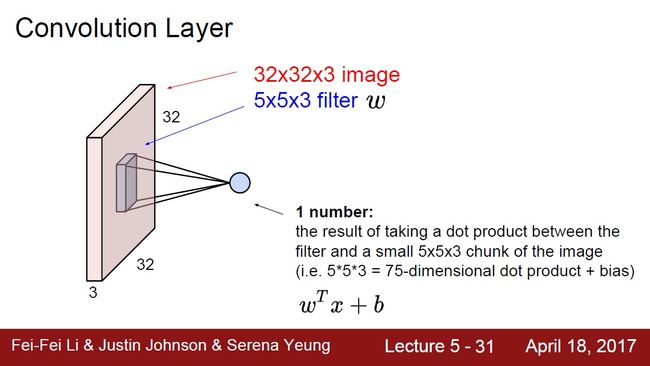获取Keras模型中间层输出
使用Keras可以比较方便地搭建一些深度学习网络,获取中间层输出可以帮助理解它是如何运行的。这里使用一个小型的Keras网络,对Caltech101数据集进行图像分类,并获取中间层输出结果,以及手工计算卷积层的输出结果。
修正:表示当前是训练模式还是测试模式的参数K.learning_phase()文中表述和使用有误,在该函数说明中可以看到:
The learning phase flag is a bool tensor (0 = test, 1 = train),所以0是测试模式,1是训练模式,部分网络结构下两者有差别。
我使用的版本:
1. WIN7系统
2. Python 2.7.10.2
3. Keras 2.0.8
4. Theano 0.9.0
5. numpy 1.13.1
6. h5py 2.5.0
7. OpenCV 2.4.13
在ubuntu中也可运行,需要修改文件路径,并且如果在ubuntu中使用的后端是tensorflow,后面的kernel不需要翻转。我的Keras设置中总是:"image_data_format": "channels_last"。
参考资料:
1. http://keras-cn.readthedocs.io/en/latest/for_beginners/FAQ/#intermediate_layer
2. cs231n_2017_lecture5
从文件夹中提取图像数据的方式:
函数:
def eachFile(filepath): #将目录内的文件名放入列表中
pathDir = os.listdir(filepath)
out = []
for allDir in pathDir:
child = allDir.decode('gbk') # .decode('gbk')是解决中文显示乱码问题
out.append(child)
return out
def get_data(data_name,train_left=0.0,train_right=0.7,train_all=0.7,resize=True,data_format=None,t=''): #从文件夹中获取图像数据
file_name = os.path.join(pic_dir_out,data_name+t+'_'+str(train_left)+'_'+str(train_right)+'_'+str(Width)+"X"+str(Height)+".h5")
print file_name
if os.path.exists(file_name): #判断之前是否有存到文件中
f = h5py.File(file_name,'r')
if t=='train':
X_train = f['X_train'][:]
y_train = f['y_train'][:]
f.close()
return (X_train, y_train)
elif t=='test':
X_test = f['X_test'][:]
y_test = f['y_test'][:]
f.close()
return (X_test, y_test)
else:
return
data_format = conv_utils.normalize_data_format(data_format)
pic_dir_set = eachFile(pic_dir_data)
X_train = []
y_train = []
X_test = []
y_test = []
label = 0
for pic_dir in pic_dir_set:
print pic_dir_data+pic_dir
if not os.path.isdir(os.path.join(pic_dir_data,pic_dir)):
continue
pic_set = eachFile(os.path.join(pic_dir_data,pic_dir))
pic_index = 0
train_count = int(len(pic_set)*train_all)
train_l = int(len(pic_set)*train_left)
train_r = int(len(pic_set)*train_right)
for pic_name in pic_set:
if not os.path.isfile(os.path.join(pic_dir_data,pic_dir,pic_name)):
continue
img = cv2.imread(os.path.join(pic_dir_data,pic_dir,pic_name))
if img is None:
continue
if (resize):
img = cv2.resize(img,(Width,Height))
if (data_format == 'channels_last'):
img = img.reshape(-1,Width,Height,3)
elif (data_format == 'channels_first'):
img = img.reshape(-1,Width,Height,3)
img = img.transpose(0, 3, 1, 2)
if (pic_index < train_count):
if t=='train':
if (pic_index >= train_l and pic_index < train_r):
X_train.append(img)
y_train.append(label)
else:
if t=='test':
X_test.append(img)
y_test.append(label)
pic_index += 1
if len(pic_set) <> 0:
label += 1
f = h5py.File(file_name,'w')
if t=='train':
X_train = np.concatenate(X_train,axis=0)
y_train = np.array(y_train)
f.create_dataset('X_train', data = X_train)
f.create_dataset('y_train', data = y_train)
f.close()
return (X_train, y_train)
elif t=='test':
X_test = np.concatenate(X_test,axis=0)
y_test = np.array(y_test)
f.create_dataset('X_test', data = X_test)
f.create_dataset('y_test', data = y_test)
f.close()
return (X_test, y_test)
else:
return调用:
global Width, Height, pic_dir_out, pic_dir_data
Width = 32
Height = 32
num_classes = 102
pic_dir_out = 'E:/pic_cnn/pic_out/'
pic_dir_data = 'E:/pic_cnn/pic_dataset/Caltech101/'
pic_dir_txt = 'E:/pic_cnn/txt/'
(X_train, y_train) = get_data("Caltech101_color_data_",0.0,0.7,data_format='channels_last',t='train')
(X_test, y_test) = get_data("Caltech101_color_data_",0.0,0.7,data_format='channels_last',t='test')
X_train = X_train/255.
X_test = X_test/255.
print X_train.shape
print X_test.shape
y_train = np_utils.to_categorical(y_train, num_classes)
y_test = np_utils.to_categorical(y_test, num_classes)设计的小型卷积神经网络:
model = Sequential()
model.add(Convolution2D(
input_shape=(Width, Height, 3),
filters=8,
kernel_size=3,
strides=1,
padding='same',
data_format='channels_last',
))
model.add(Activation('relu'))
model.add(MaxPooling2D(
pool_size=2,
strides=2,
data_format='channels_last',
))
model.add(Flatten())
model.add(Dense(num_classes, activation='softmax'))
model.compile(optimizer=Adam(),
loss='categorical_crossentropy',
metrics=['accuracy'])
print('\nTraining ------------') #从文件中提取参数,训练后存在新的文件中
cm = 0 #修改这个参数可以多次训练
cm_str = '' if cm==0 else str(cm)
cm2_str = '' if (cm+1)==0 else str(cm+1)
if cm >= 1:
model.load_weights(os.path.join(pic_dir_out,'cnn_model_Caltech101_32f8_'+cm_str+'.h5'))
model.fit(X_train, y_train, epochs=10,batch_size=128,)
model.save_weights(os.path.join(pic_dir_out,'cnn_model_Caltech101_32f8_'+cm2_str+'.h5'))
提取卷积层输出结果并保存到文件:
get_1_layer_output = K.function([model.layers[0].input, K.learning_phase()],
[model.layers[0].output])
pic_len = 1
p_32 = get_1_layer_output([X_train[0:pic_len], 0])[0] #获取第一层的输出
image_array = deprocess_image(p_32)
pic_mid = 'mid'
if not os.path.isdir(os.path.join(pic_dir_out,pic_mid)):
os.mkdir(os.path.join(pic_dir_out,pic_mid))
for n_p in xrange(pic_len):
if not os.path.isdir(os.path.join(pic_dir_out,pic_mid,str(n_p))):
os.mkdir(os.path.join(pic_dir_out,pic_mid,str(n_p)))
cv2.imwrite(os.path.join(pic_dir_out,pic_mid,str(n_p),'o_'+str(0)+'.jpg'),
cv2.resize(X_train[n_p]*255.,(512,512)))
for i in xrange(len(image_array)):
cv2.imwrite(os.path.join(pic_dir_out,pic_mid,str(n_p),'p_'+str(i)+'.jpg'),
cv2.resize(image_array[i,:,:,n_p],(512,512)))其中的deprocess_image函数将0到1的浮点数转换到0-255的图像值:
def deprocess_image(x):
if K.image_data_format() == 'channels_first':
x = x.transpose(1, 2, 3, 0)
elif K.image_data_format() == 'channels_last':
x = x.transpose(3, 1, 2, 0)
x *= 255.
x = np.clip(x, 0, 255).astype('uint8')
return x其中的“K.learning_phase()”表示当前处于训练状态还是测试状态,0为训练,1为测试。例如当网络有Dropout层时,训练和测试要采取不同的策略,修改该值可以得到想要的结果。
手工计算卷积层结果:(运算效率暂时不在考虑的范围内,若在tensorflow下不需要翻转核)
pic_len = 1
pic_array = X_train[0:pic_len] #截取一部分训练数据
weights = model.layers[0].get_weights() #获取第一层的参数
filters = 8
channels = 3
conv_pic = np.zeros((pic_len,Width,Height,filters)) #产生的多幅卷积图像
border_pic = np.zeros((pic_len,Width+2,Height+2,channels)) #边缘加一圈0后的图像
for n_p in xrange(pic_len):
border_pic[n_p] = cv2.copyMakeBorder(pic_array[n_p], 1,1,1,1, cv2.BORDER_CONSTANT,(0,0,0))
for n_filters in xrange(filters):
for n_channels in xrange(channels):
kernel = weights[0][:,:,n_channels,n_filters] #获取卷积核
kernel = np.flipud(np.fliplr(kernel)) #左右翻转后上下翻转
for n_p in xrange(pic_len):
for i in range(1,Width+1):
for j in range(1,Height+1):
conv_pic[n_p,i-1,j-1,n_filters] += np.sum((border_pic[n_p,i-1:i+2,j-1:j+2,n_channels])*kernel)
conv_pic[:,:,:,n_filters] += weights[1][n_filters] #加上bias
image_array2 = deprocess_image(conv_pic)
pic_mid = 'mid'
for n_p in xrange(pic_len):
for i in xrange(len(image_array2)):
cv2.imwrite(os.path.join(pic_dir_out,pic_mid,str(n_p),'m_'+str(i)+'.jpg'),
cv2.resize(image_array2[i,:,:,n_p],(512,512)))
print ('difference: ',np.sum(image_array-image_array2))便于理解的手工计算方式:
filters = 8
channels = 3
one_pic = X_train[0]
weights = model.layers[0].get_weights()
one_pic = cv2.copyMakeBorder(one_pic, 1,1,1,1, cv2.BORDER_CONSTANT,(0,0,0))
conv_pic = np.zeros((Width,Height,filters))
for f in xrange(filters):
for i in range(1,Width+1):
for j in range(1,Height+1):
for c in xrange(channels):
kernel = weights[0][:,:,c,f]
kernel = np.flipud(np.fliplr(kernel))
conv_pic[i-1,j-1,f] += np.sum((one_pic[i-1:i+2,j-1:j+2,c])*kernel)
conv_pic[i-1,j-1,f] += weights[1][f]
conv_pic = conv_pic.reshape((-1,Width,Height,8))其中获取到的weights[0]是参数矩阵,weights[1]是bias。其中的“kernel = np.flipud(np.fliplr(kernel))”的意思是将kernel左右翻转后再上下翻转,这样计算出来的结果才与调用接口产生的结果相同。计算方式的来源如下(来自cs231n_2017_lecture5.pdf):
在这附近有几张帮助理解卷积神经网络的图(来自cs231n_2017_lecture5.pdf):
完整代码:
# -*- coding: utf-8 -*-
import cv2
import numpy as np
import os
import h5py
from keras.utils import np_utils, conv_utils
from keras.models import Sequential
from keras.layers import Convolution2D, MaxPooling2D, Flatten, Dense, Activation
from keras.optimizers import Adam
from keras import backend as K
def get_name_list(filepath): #获取各个类别的名字
pathDir = os.listdir(filepath)
out = []
for allDir in pathDir:
if os.path.isdir(os.path.join(filepath,allDir)):
child = allDir.decode('gbk') # .decode('gbk')是解决中文显示乱码问题
out.append(child)
return out
def eachFile(filepath): #将目录内的文件名放入列表中
pathDir = os.listdir(filepath)
out = []
for allDir in pathDir:
child = allDir.decode('gbk') # .decode('gbk')是解决中文显示乱码问题
out.append(child)
return out
def get_data(data_name,train_left=0.0,train_right=0.7,train_all=0.7,resize=True,data_format=None,t=''): #从文件夹中获取图像数据
file_name = os.path.join(pic_dir_out,data_name+t+'_'+str(train_left)+'_'+str(train_right)+'_'+str(Width)+"X"+str(Height)+".h5")
print file_name
if os.path.exists(file_name): #判断之前是否有存到文件中
f = h5py.File(file_name,'r')
if t=='train':
X_train = f['X_train'][:]
y_train = f['y_train'][:]
f.close()
return (X_train, y_train)
elif t=='test':
X_test = f['X_test'][:]
y_test = f['y_test'][:]
f.close()
return (X_test, y_test)
else:
return
data_format = conv_utils.normalize_data_format(data_format)
pic_dir_set = eachFile(pic_dir_data)
X_train = []
y_train = []
X_test = []
y_test = []
label = 0
for pic_dir in pic_dir_set:
print pic_dir_data+pic_dir
if not os.path.isdir(os.path.join(pic_dir_data,pic_dir)):
continue
pic_set = eachFile(os.path.join(pic_dir_data,pic_dir))
pic_index = 0
train_count = int(len(pic_set)*train_all)
train_l = int(len(pic_set)*train_left)
train_r = int(len(pic_set)*train_right)
for pic_name in pic_set:
if not os.path.isfile(os.path.join(pic_dir_data,pic_dir,pic_name)):
continue
img = cv2.imread(os.path.join(pic_dir_data,pic_dir,pic_name))
if img is None:
continue
if (resize):
img = cv2.resize(img,(Width,Height))
if (data_format == 'channels_last'):
img = img.reshape(-1,Width,Height,3)
elif (data_format == 'channels_first'):
img = img.reshape(-1,Width,Height,3)
img = img.transpose(0, 3, 1, 2)
if (pic_index < train_count):
if t=='train':
if (pic_index >= train_l and pic_index < train_r):
X_train.append(img)
y_train.append(label)
else:
if t=='test':
X_test.append(img)
y_test.append(label)
pic_index += 1
if len(pic_set) <> 0:
label += 1
f = h5py.File(file_name,'w')
if t=='train':
X_train = np.concatenate(X_train,axis=0)
y_train = np.array(y_train)
f.create_dataset('X_train', data = X_train)
f.create_dataset('y_train', data = y_train)
f.close()
return (X_train, y_train)
elif t=='test':
X_test = np.concatenate(X_test,axis=0)
y_test = np.array(y_test)
f.create_dataset('X_test', data = X_test)
f.create_dataset('y_test', data = y_test)
f.close()
return (X_test, y_test)
else:
return
def deprocess_image(x):
if K.image_data_format() == 'channels_first':
x = x.transpose(1, 2, 3, 0)
elif K.image_data_format() == 'channels_last':
x = x.transpose(3, 1, 2, 0)
x *= 255.
x = np.clip(x, 0, 255).astype('uint8')
return x
def main():
global Width, Height, pic_dir_out, pic_dir_data
Width = 32
Height = 32
num_classes = 102 #Caltech101为102 cifar10为10
pic_dir_out = 'E:/pic_cnn/pic_out/'
pic_dir_data = 'E:/pic_cnn/pic_dataset/Caltech101/'
pic_dir_txt = 'E:/pic_cnn/txt/'
(X_train, y_train) = get_data("Caltech101_color_data_",0.0,0.7,data_format='channels_last',t='train')
(X_test, y_test) = get_data("Caltech101_color_data_",0.0,0.7,data_format='channels_last',t='test')
X_train = X_train/255.
X_test = X_test/255.
print X_train.shape
print X_test.shape
y_train = np_utils.to_categorical(y_train, num_classes)
y_test = np_utils.to_categorical(y_test, num_classes)
model = Sequential()
model.add(Convolution2D(
input_shape=(Width, Height, 3),
filters=8,
kernel_size=3,
strides=1,
padding='same',
data_format='channels_last',
))
model.add(Activation('relu'))
model.add(MaxPooling2D(
pool_size=2,
strides=2,
data_format='channels_last',
))
model.add(Flatten())
model.add(Dense(num_classes, activation='softmax'))
model.compile(optimizer=Adam(),
loss='categorical_crossentropy',
metrics=['accuracy'])
print('\nTraining ------------') #从文件中提取参数,训练后存在新的文件中
cm = 0 #修改这个参数可以多次训练
cm_str = '' if cm==0 else str(cm)
cm2_str = '' if (cm+1)==0 else str(cm+1)
if cm >= 1:
model.load_weights(os.path.join(pic_dir_out,'cnn_model_Caltech101_32f8_'+cm_str+'.h5'))
model.fit(X_train, y_train, epochs=10,batch_size=128,)
model.save_weights(os.path.join(pic_dir_out,'cnn_model_Caltech101_32f8_'+cm2_str+'.h5'))
get_1_layer_output = K.function([model.layers[0].input, K.learning_phase()],
[model.layers[0].output])
pic_len = 1
p_32 = get_1_layer_output([X_train[0:pic_len], 0])[0] #获取第一层的输出
image_array = deprocess_image(p_32)
pic_mid = 'mid'
if not os.path.isdir(os.path.join(pic_dir_out,pic_mid)):
os.mkdir(os.path.join(pic_dir_out,pic_mid))
for n_p in xrange(pic_len):
if not os.path.isdir(os.path.join(pic_dir_out,pic_mid,str(n_p))):
os.mkdir(os.path.join(pic_dir_out,pic_mid,str(n_p)))
cv2.imwrite(os.path.join(pic_dir_out,pic_mid,str(n_p),'o_'+str(0)+'.jpg'),
cv2.resize(X_train[n_p]*255.,(512,512)))
for i in xrange(len(image_array)):
cv2.imwrite(os.path.join(pic_dir_out,pic_mid,str(n_p),'p_'+str(i)+'.jpg'),
cv2.resize(image_array[i,:,:,n_p],(512,512)))
'''
filters = 8
channels = 3
one_pic = X_train[0]
weights = model.layers[0].get_weights()
one_pic = cv2.copyMakeBorder(one_pic, 1,1,1,1, cv2.BORDER_CONSTANT,(0,0,0))
conv_pic = np.zeros((Width,Height,filters))
for f in xrange(filters):
for i in range(1,Width+1):
for j in range(1,Height+1):
for c in xrange(channels):
kernel = weights[0][:,:,c,f]
kernel = np.flipud(np.fliplr(kernel))
conv_pic[i-1,j-1,f] += np.sum((one_pic[i-1:i+2,j-1:j+2,c])*kernel)
conv_pic[i-1,j-1,f] += weights[1][f]
conv_pic = conv_pic.reshape((-1,Width,Height,8))
'''
pic_len = 1
pic_array = X_train[0:pic_len] #截取一部分训练数据
weights = model.layers[0].get_weights() #获取第一层的参数
filters = 8
channels = 3
conv_pic = np.zeros((pic_len,Width,Height,filters)) #产生的多幅卷积图像
border_pic = np.zeros((pic_len,Width+2,Height+2,channels)) #边缘加一圈0后的图像
for n_p in xrange(pic_len):
border_pic[n_p] = cv2.copyMakeBorder(pic_array[n_p], 1,1,1,1, cv2.BORDER_CONSTANT,(0,0,0))
for n_filters in xrange(filters):
for n_channels in xrange(channels):
kernel = weights[0][:,:,n_channels,n_filters] #获取卷积核
kernel = np.flipud(np.fliplr(kernel)) #左右翻转后上下翻转
for n_p in xrange(pic_len):
for i in range(1,Width+1):
for j in range(1,Height+1):
conv_pic[n_p,i-1,j-1,n_filters] += np.sum((border_pic[n_p,i-1:i+2,j-1:j+2,n_channels])*kernel)
conv_pic[:,:,:,n_filters] += weights[1][n_filters] #加上bias
image_array2 = deprocess_image(conv_pic)
pic_mid = 'mid'
for n_p in xrange(pic_len):
for i in xrange(len(image_array2)):
cv2.imwrite(os.path.join(pic_dir_out,pic_mid,str(n_p),'m_'+str(i)+'.jpg'),
cv2.resize(image_array2[i,:,:,n_p],(512,512)))
print ('difference: ',np.sum(image_array-image_array2))
if __name__ == '__main__':
main() |
|
 |
 |
 |
 |
 |
 |
 |
 |




